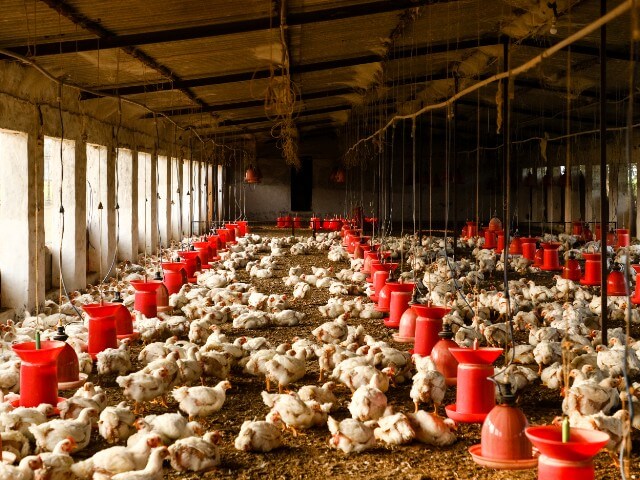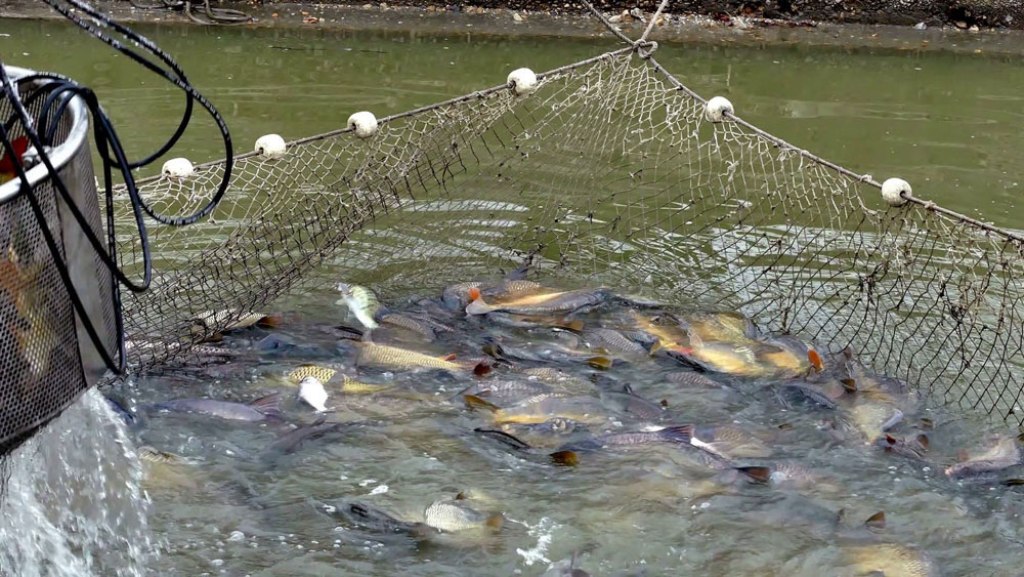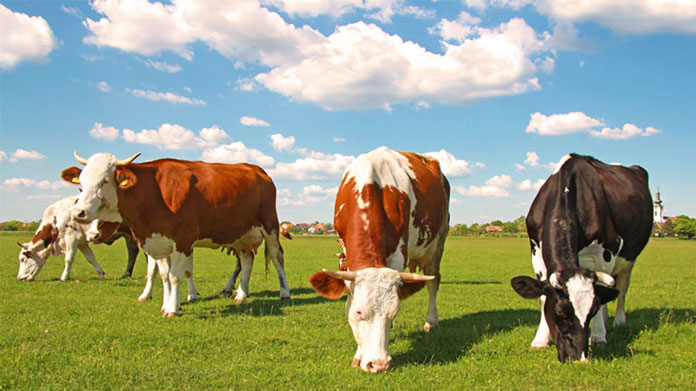Animal husbandry, dairying, and fisheries all play a significant role in the country’s economy and socio-economic development. These activities have helped farmers’ food baskets, nutrition security, and household income, as well as provided cheap and nutritious food. They also play an important role in generating gainful employment in rural areas, particularly among landless, small, and marginal farmers and women.
Farmers’ best protection against natural disasters such as drought and other natural calamities is livestock. About 87.7% of the livestock is owned by farmers with marginal small and semi-medium operational holdings (less than 4 ha). As a result, the livestock sector’s development would be more inclusive. India is home to the world’s largest livestock population. It produces 57.3 percent of the world’s buffalo and has 14.7 percent of the world’s cattle population.
In the country, there are approximately 71.6 million sheep, 140.5 million goats, and 11.1 million pigs. India has abundant livestock and poultry resources, which contribute significantly to the improvement of rural people’s socio-economic conditions.
Livestock Production
Agriculture and livestock production are inextricably linked, with each relying on the other and both critical to overall food security. At current prices, the value of output from the livestock sector was estimated to be around 459051 cr, according to the central statistics office. During 2011-12, the value of output from the total agricultural and allied sector was about 24.8 percent at current prices and 25.6 percent at constant prices (2004-05). The milk output is worth 305484 crores.
Milk Production
From 2012 to 2013, India, the world’s largest milk producer, is expected to produce over 133 million tonnes of milk. The government has taken several steps to increase the productivity of dairy animals, resulting in a significant increase in milk production from 102.6 million tonnes at the end of the 10th plan (2006-07) to 127.9 million tonnes at the end of the 11th plan (2011-12). In 2011-12, the annual growth rate for milk production was about 5% higher than in 2010-11.
Egg Production
Over the years, the country’s poultry industry has made steady progress. The production of poultry meat is estimated to be around 2.47 million tonnes. Egg availability per capita is currently around 55 eggs per year. According to the report of the agricultural and processed food products export development authority, poultry exports were around 457.82 crores in 2011-12. (APEDA).
Wool Production
Wool production declined marginally at the end of the 11th five-year plan (2011-12) to 44.7 million kg. The annual growth rate for the production of wool is about 4% in 2011-12 compared to the previous year.
Meat Production
Meat production has registered a healthy growth from 2.3 million tons at the end of the 10th five-year plan (2006-07) to 5.5 million tons at the end of the 11th five-year plan (2011-12). The annual growth rate for meat production in 2011-12 was about 13%.
Fisheries Production
Because of our long coastline of about 8000 kilometers, as well as our inland water resources, the country has enormous fisheries potential. The value of output from the fisheries sector, according to CSO estimates, was around 76699 crores at current prices. At current prices, this equates to about 4.15 percent of the value of agricultural and allied sector output in 2011-12. India is the world’s second-largest fish producer and the second-largest producer of freshwater fish. Fish production increased from 41.57 lakh tones in 1991-92 (24.47 lakh for marine and 17.10 lakh for inland fisheries) to 86.66 lakh tones in 2011-12 (33.71 lakh for marine and 52.95 lakh for inland fisheries). While inland fisheries production grew at a faster rate during this time, marine fisheries production grew at a slower rate.
Export of Livestock and Fisheries Production
The livestock sector also contributes to export in spite of the fact limited number of livestock enterprises function in the country on commercial basis. Total export earnings from livestock, poultry, and related products were 33417 cr.
Governments Initiative and Assistance to States
Because agriculture, which includes animal husbandry, dairying, and fisheries, is a state subject, the department’s focus has been on assisting state governments in developing these sectors. The department has been assisting state governments with animal disease control, scientific management, and up-grading of genetic resources, increasing the availability of nutritious feed and fodder, long-term development of processing and marketing facilities, and improving the production and profitability of livestock and fisheries enterprises.
12th Five Year Plan
An allocation of 14179.00 crores for special packaging for the development of the Kuttanad ecosystem and mitigation of agrarian distress in Kerala’s Idukki district has been approved in principle by the department. The department has proposed a major restructuring of the schemes for the 12th plan in order to realize the potential for the development of the livestock and fisheries sectors. One of the major initiatives is the announcement in the Union Budget 2013-14 of the launch of the national livestock mission (NLM) scheme.
The scheme would encompass all animal husbandry schemes, with the exception of those relating to disease control and bovine development, with the main goal of achieving sustainable development of the sector by giving states more flexibility in formulating and implementing schemes based on local needs for farmer benefits. The 12th plan provision for the national livestock mission is proposed to be 2800 crore. There are 600 crores in total. The rest of the 2200 crore was kept under the central sector component. The sub-mission on feed and fodder will be a major component of the national livestock mission, as it will increase the availability of high-quality feed and fodder for livestock, which is essential for improving productivity.
The department has proposed to expand the ongoing livestock health and disease control scheme, which includes the national control program for major diseases such as FMD, PPR, and Brucellosis, in light of the importance of effective control of animal diseases that negatively affect livestock productivity. The FMD control program is now in place in 221 districts, with the 12th plan aiming to cover all districts in a phased manner. The LH and DC scheme would receive 3114 crores under the 12th plan. There are 1744 crores in total. In the 12th plan, a new component, the national control program for CSF, is also proposed to be launched.
The existing scheme relating to bovine development and dairy development are proposed to be merged into a new scheme of the national program for bovine breeding and dairy (NPBBD). That will be implemented alongside the national dairy plan (phase 1) (NDP 1) launched during 2011-12 in order to expand the artificial insemination program to cover about 35 percent breedable bovine population by the end of the 12th plan. It aims to improve the productivity of milk through genetic improvement.
Efforts to conserve high-quality indigenous breeds will be bolstered in the 12th plan, as part of NPBBD and NDP 1. The NFDB would be strengthened by bringing all fisheries development schemes under its umbrella and increasing investment in the sector.
Difficulties of the Sector
Having said this, it would be quite impossible to gain a clear idea of the complexity of the problems facing animal husbandry in India without some understanding of the special factors conditioning the subject in India. For example-
- Religion and traditional prejudices and customs
- Effect of the density of the population and the low purchasing power of the cultivators on farming practice
- General lack of appreciation of the fundamental principles which underlie proper breeding, feeding and management, and great need which exists for a properly balanced system of land utilization.
- Lakh in most provinces and states of any expert animal husbandry organization devoted solely to the interests of livestock
- Annual droving of millions of dealers cattle from north to south of India
- The government funds for the veterinary and animal husbandry practices offered by the government are not properly used for it but these funds are used by the higher posted government officials for their own purposes.
- No proper vaccination schedules are adopted in India which has a deleterious effect on the livestock. These factors and many more take a toll on animal husbandry in India while as less provocative campaigns and fewer initiatives are also some of the problems and issues challenging the profession in India.
Livestock as National Economy
India is the world’s fastest-growing country, with agricultural and animal husbandry providing income to more than 70% of the population. Agriculture and animal husbandry both contribute equally to the national GDP. In addition, because India is the world’s leading producer of total milk, animal husbandry plays an important role in the country’s economy.
The current contribution of livestock to the national economy is estimated to be 18000 crores, with milk and milk products accounting for 70%, meat and meat products for 11.5 percent, poultry for 8.8%, and dung for fuel accounting for the remaining 8.8%. (7.8 percent ). The value of other animal products such as eggs, wool, leather goods, and so on adds up to a total of 18000 crores. Apart from the aforementioned items, the value of draught power generated by 88 million bullocks, including 8 million buffalo bullocks, is in the range of Rs 5000 crores. The market value of all domesticated species in India, according to some estimates, is in the range of Rs 45000 crore.
Although the cattle and buffalo populations have increased by about 35 percent and 61 percent, respectively, over the 1956 base, milk production from cattle and buffaloes has increased over the year. The human population increased by 79 percent as a result. This has cancelled out any gains in milk production. By the year 2011, the total human population will have surpassed 100 million. We wouldn’t need more than 90 million tonnes of milk to feed this population at the minimum recombination level (230 gm/individual/day).
To a large extent, we are short on both fees and fodder. According to the NCA, India had a 44 percent concentration deficit, 38 percent green fodder shortage, and 44 percent dry fodder shortage. However, due to urbanization and the rapid increase in the human population, the available feed and fodder situation necessitates that we reduce. The total crop area will most likely decrease. In order to increase milk, meat, and egg consumption per capita. Given the ever-increasing population on the one hand, and the overall scarcity of quality animals and their feed on the other, we must think in terms of increased production.
There is no doubt that traditional methods of paying attention to feeding, breeding, management, and disease control will result in significant increases in animal productivity, but no larger gains are possible. The goal is to achieve production using only traditional methods. Biotechnology has recently played a significant role in animal nutrition, reproduction, breeding, and management in order to achieve the goals of animal husbandry.



